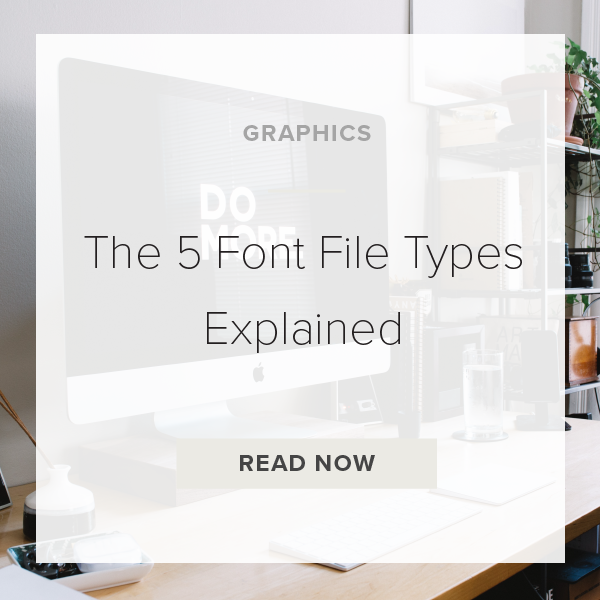When I first started out as a font designer I was really overwhelmed with all of the font file formats that existed and I had zero clue which ones to use. It took a lot of googling to figure everything out on my own. That’s why I’m putting this post together for you guys today. I’m going to answer every question you’ve been wondering all in one post!
There are currently 5 industry standard font file formats. They are OTF, TTF, WOFF, SVG, and EOF. Each of these formats serve different purposes and have unique features.
1. TTF
The True Type Format is the predecessor to the OTF. TTF was actually a joint venture between Microsoft and Adobe. The two companies got together to create a format that would work on seamlessly within both platforms It was the industry standard in the 80’s and 90’s before they made the OTF. The problem with the TTF is that it doesn’t have an automatic features. It was also made primarily for viewing on a screen so it doesn’t do as well when printed.
2. OTF
The Open Type Format is the most complex and versatile font format in the industry. OTF is also unique because it contains some pretty cool automatic features for ligatures and alternates. For example, OTF is setup to automatically place a “tt” or at “gh” ligature into the text you’re writing as you’re writing it!
3. WOFF & WOFF2
The Web Open Font Format is the file type that is used for using fonts online. You can upload a WOFF into your website builder (i.e. Squarespace or Showit) and then use the font for anything you’re working on in your website design. WOFFs are actually just an OTF or TTF that’s been compressed which allows for fast viewing speed within websites. WOFF2 is the newest version of WOFF but it’s still not widely used yet on web browsers. It’s supposed to have a little bit faster compression rate but overall it’s not much different than the original WOFF.
PRO TIP: Just use the WOFF format. Maybe once the WOFF2 is integrated further across the internet I’ll use it. But, for now, the WOFF works great!
4. Open Type-SVG
The Open Type Scalable Vector Graphic format is the latest and greatest craze in the font world. This file format has the same capabilities of a OTF but it also has some even more impressive new ones! With OT-SVG’s you can actually create fonts that have texture and color to them. That’s because this font file type isn’t a vector (Iike ever other font) it’s actually a bitmap raster. Because of this, you can create stunning textured multicolored characters. But– since this format is so new, only Safari currently supports it.
PRO TIP: Just because a web browser doesn’t support a font file format doesn’t mean you can’t use it. I design all of my website assets and graphics in Adobe Illustrator which does support all of these formats. Then, I upload my finished graphics to the web. So the browser situation doesn’t really effect me personally.
5. EOF
The Embedded Open Type Format is basically Microsofts version of WOFF. Because I’m a MAC girl, I really have no need to even use this file format. But, if you are a budding font designer and only have a Windows computer, I could understand why using this format would be beneficial for using your fonts on the web.
PRO TIP: When designing and selling fonts on Creative Market (like I do!), make sure to include the OTF, TTF, and WOFF formats of your font for your customers. You’ll thank me later!
The 5 Font File Format Types Explained
Nov 12, 2018
